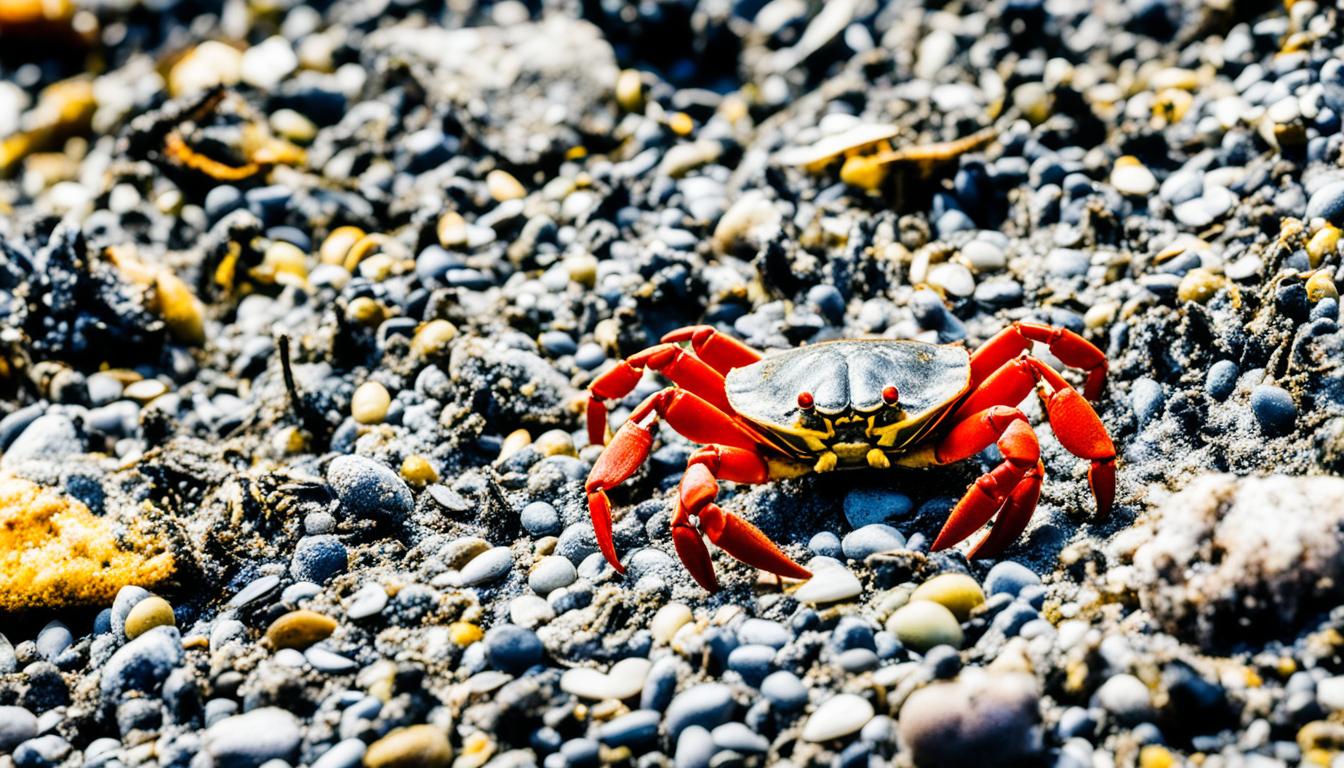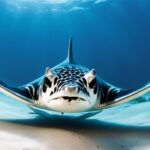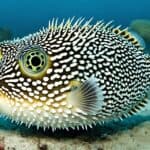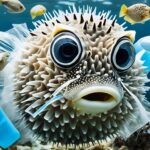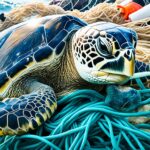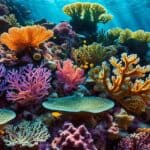Many people are wondering, are crabs endangered? We’re looking into the conservation status of crabs across different types. Reports show that crab populations are dropping fast. This is mainly because of human actions like taking too many, destroying their homes, and changing the environment. These actions make crabs at risk of becoming endangered marine life.
It’s important to know about the conservation status of crabs. This helps us save these species and keep marine ecosystems healthy. We need strong conservation efforts now more than ever. Crabs are crucial to their ecosystems.
Understanding Crab Populations
It’s crucial to understand crab populations to grasp the challenges they face. In recent years, their numbers have been declining. This decline affects not just the crabs but also the marine ecosystems they live in.
Trends in Crab Population Decline
Crab populations are declining in many areas. The American horseshoe crab is a good example. Over thirty years, their numbers have dropped by about two-thirds, especially in places like Delaware Bay. This decline shows the big issues facing crab populations.
Key Factors Influencing Population Changes
Many factors affect crab populations. Overfishing is a big problem, driven by the need for bait and biomedical uses. Coastal development also harms them by destroying their homes. Climate change changes the marine environment, making it harder for crabs to reproduce and grow.
| Factor | Impact on Crab Populations |
|---|---|
| Overharvesting | Reduces numbers; affects breeding capacity |
| Coastal Development | Destroys natural habitats; disrupts spawning areas |
| Climate Change | Alters marine ecosystems; impacts water temperature and quality |
Are Crabs Endangered? An Overview of Conservation Status
The conservation status of crabs shows a mix of vulnerability and importance. Some crabs are not yet endangered, but their numbers are worrying. Laws like the Endangered Species Act work to protect these marine animals and their homes.
Endangered Species Act and Crabs
The Endangered Species Act (ESA) is key in protecting species in danger, including some crabs. Even though not all crabs are listed, their decreasing numbers are a concern. The act helps focus on which species need help and shows how important crabs are in the ocean.
Species at Risk: A Closer Look
The American horseshoe crab is one example that might get ESA protection soon. Their numbers are dropping fast, making us think about why and what it means. The rufa red knot, a bird that eats crab eggs, shows how crabs affect other species too. When crabs struggle, it can harm many other animals and their places to live.
Threats to Crab Species
Understanding the threats to crab species is key to protecting marine ecosystems. These threats harm crab populations and affect the environment. They make it hard for crabs to survive and thrive.
Overharvesting and Extrapolation to Other Species
Overfishing is a big problem for crabs. People want crabs for food and medicine, leading to too many being caught. For example, 700,000 horseshoe crabs are taken from the sea every year for their blood.
This not only hurts crab numbers but also harms other sea creatures that live in the same places.
Habitat Loss and Environmental Impacts
Crabs are losing their homes as coasts get developed. This makes it hard for them to find places to live and lay eggs. Climate change, with its sea level rise and pollution, makes things worse.
These changes hurt crabs’ ability to reproduce and survive. It’s a big worry for their future.
| Threats to Crab Species | Details |
|---|---|
| Overharvesting | High demand for crab products leading to significant population declines. |
| Habitat Loss | Destruction of spawning grounds due to coastal development. |
| Climate Change | Rising sea levels and pollution reduce suitable habitats for crabs. |
Importance of Crab Conservation
Crab conservation is key to keeping marine ecosystems healthy. As important species, crabs help balance the food web. They support many marine animals, showing why we must protect them.
The Role Crabs Play in Marine Ecosystems
Crabs feed many animals, like fish, seabirds, and mammals. The horseshoe crab is crucial for the balance in the ocean. Their eggs are essential for migratory birds, making crab conservation vital.
Keeping crabs safe helps the health of many marine ecosystems.
Impacts on Other Marine Species Due to Crab Population Declines
When there are fewer crabs, it affects many marine species. This can lead to a big change in the food web. For instance, birds may not find enough eggs, which can hurt their survival.
Also, fish and other animals might fight more for food, which can hurt their numbers too.
This shows why we need to protect crabs to keep marine life healthy and thriving.
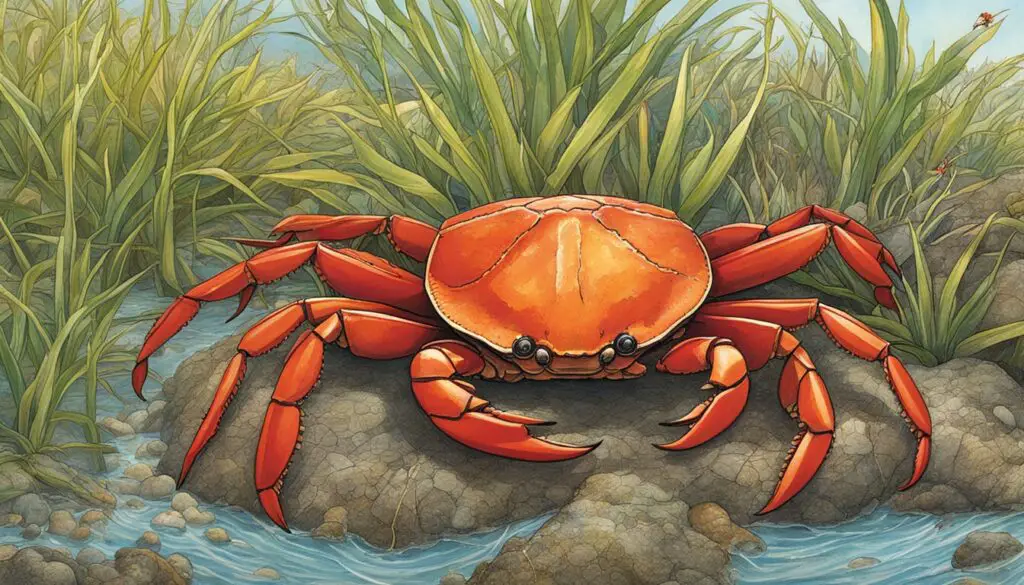
| Marine Species Affected | Impact of Crab Decline |
|---|---|
| Migratory Birds | Reduced food availability during migration, leading to decreased survival rates. |
| Fish Species | Increased competition for other food sources, affecting growth and reproduction. |
| Marine Mammals | Decline in prey availability, impacting health and breeding. |
| Seabirds | Lower reproductive success due to insufficient food supply. |
Global Crab Conservation Efforts
Many countries are working together to protect crab populations. They use international treaties and regulations for this. These efforts help keep vulnerable crab species safe and support sustainable practices.
International Treaties and Regulations
Many international agreements help protect marine life, including crabs. The Convention on Biological Diversity is one such treaty. It helps countries work together to save marine life.
These agreements focus on sustainable fishing, protecting habitats, and saving endangered species. Many places now have stricter rules for catching crabs. This follows global standards.
Successful Case Studies in Crab Conservation
There are many success stories around the world in crab conservation. For example, some areas have stopped catching female horseshoe crabs during their breeding season. This helps their numbers grow.
There are also new ways to replace crab blood in medical tests. These alternatives help reduce the need for vulnerable crab species. They also help ensure these crabs can continue to thrive.
Protecting Marine Habitats for Crabs
Keeping marine habitats safe is key for crabs and other sea creatures. Coastal areas are crucial for crab life cycles. By saving these places, you help crabs and also protect endangered sea life.
Stopping pollution and coastal damage is very important. You can support laws that reduce pollution and protect habitats. Projects that fix damaged ecosystems are also key. They help increase the variety of life that crabs need to thrive.
Protecting marine habitats makes you part of a group that keeps crabs and other sea life safe. You can help through advocacy, teaching, or joining your community. Every effort helps make the ocean healthier and fights for endangered sea life.
FAQ
Are crabs endangered?
Not all crab species are endangered, but some are facing big declines. This has led to talks about their conservation and what we need to do to protect them.
What are the key factors influencing crab population decline?
Overfishing for bait and biomedical use, destroying their homes due to coastal development, and environmental changes like rising sea levels and pollution are big problems.
How does the Endangered Species Act relate to crabs?
The Endangered Species Act (ESA) helps protect species, including some crabs. Even if they’re not officially endangered, their numbers are dropping fast.
What threats do crab species face?
Crabs are threatened by overfishing, losing their homes to coastal development, and environmental changes. These changes affect where they breed and lay eggs.
Why is crab conservation important?
Saving crabs is crucial because they are key to marine ecosystems. They feed many marine animals and help keep the ocean healthy.
What global efforts are being made for crab conservation?
There are global efforts to protect crabs. This includes international agreements and local programs. These focus on breeding limits and fixing their habitats.
How can we protect marine habitats for crabs?
We can protect their homes by saving coastal areas, reducing pollution, and fixing damaged ecosystems. This helps crabs and other sea creatures to live well.
Source Links
- https://biologicaldiversity.org/w/news/press-releases/endangered-species-act-protections-sought-for-american-horseshoe-crabs-2024-02-12/
- https://defenders.org/wildlife/horseshoe-crab
- https://www.theguardian.com/environment/2024/mar/02/killed-in-vast-numbers-horseshoe-crabs-under-threat-from-overharvesting

